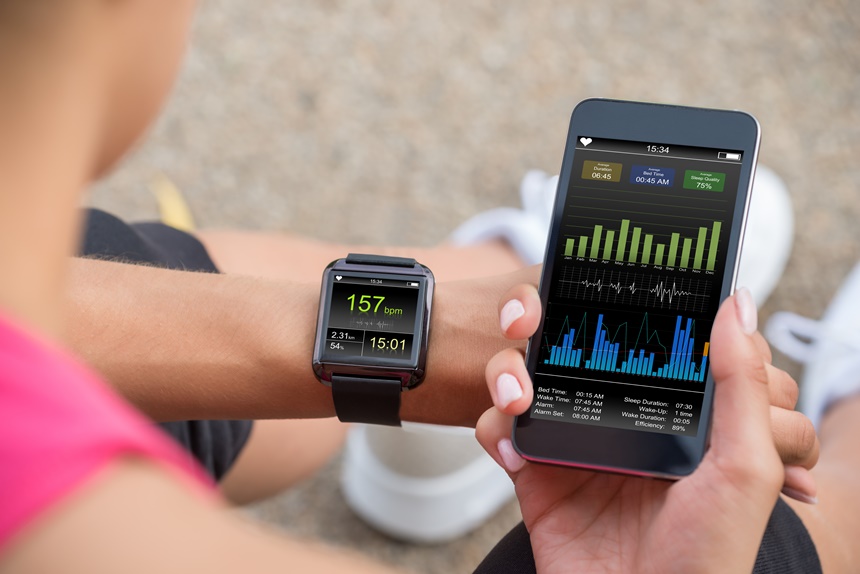Since the first smartphone was released in 2007, people have wondered if the computer in your pocket could improve your health. Seventeen years later, we now have a whole ecosystem of mobile apps claiming to offer improvements in wellness. Some of these apps focus on diet and exercise while others focus on your state of mind. Yet others are based on wearable monitoring of your heart rate, blood pressure, and other signs.
Weight loss apps such as WW (formerly Weight Watchers) and Noom encourage healthy diet, weight loss, physical activity, adequate sleep, and stress-reducing habits. These apps allow users to track — and hopefully improve — their habits, and may help users connect with friends, support groups, counselors, or coaches.
Randomized trials of weight loss apps have shown a small effect on weight loss, somewhere in the range of 2-3 kilograms (4-6 pounds) over six months. This is similar to what has been observed with in-person weight loss groups in the past. As there are so many different wellness apps, and they are constantly updating themselves, it’s difficult to say if one particular app may be more effective than average. Like any other diet and exercise program, you’re more likely to stick to one that you enjoy. So, feel free to shop around for an app that you find most appealing.
Mental health apps such as Calm, Modern Health, Talkspace, and Headspace offer some combination of meditation and mindfulness, sleep management, group chats, and access to emotional coaches, licensed therapists, and/or psychiatrists.
There is far less evidence in favor of mental health apps than for diet-and-exercise apps, and there are considerable concerns about privacy and security breaches. Some apps have even faced accusations of inappropriate behavior, harassment, and abuse. Yet they remain highly in demand due to the global shortage of mental health providers. Depending on where you live and what health insurance you have, it may be difficult to see a mental health professional in person. If you choose to use a mobile app as your primary source of mental health care, be sure to look up reviews and privacy ratings before diving in.
Smartphones and smartwatches have also opened up a new frontier in bio-monitoring. We’ve known for decades that home blood pressure measurement can greatly improve blood pressure control. Adding a smartphone self-monitoring app can further improve systolic blood pressure, with a small but significant effect. Some smartwatches have the ability to monitor vital signs including heart rate, pulse oxygen, and blood pressure. This could further improve patients’ ability to track their own blood pressure and correlate it to changes in medication, diet, activity, and weight.
Home blood sugar monitoring is another well-accepted practice for diabetics. Whether you are using fingerstick tests or a continuous glucose monitor, there are a variety of apps that can chart your blood sugars and warn you if it is getting too high or too low. There is some evidence that blood sugar tracking apps can improve overall diabetes control. Samsung, Apple, and other device vendors have spent years and hundreds of millions of dollars researching non-invasive glucose monitoring. It is possible that this technology may spare diabetics from repeated needlesticks, but as of early 2024 there is no FDA-approved device.
Heart rhythm monitoring is a more controversial area of wearable technology. Apple, Samsung, and Google all make smartwatches with built-in ECG monitors. These are not as accurate as the twelve-lead ECG monitor used in hospitals, but most people don’t go around wearing a heart monitor all day. Smartwatch monitoring could in theory detect heart rhythm changes that would otherwise be missed. The Apple Watch has been FDA-cleared for atrial fibrillation (AFib), one of the most common irregular heart rhythms.
That sounds great, right? So why is the smartwatch heart monitor far less well-accepted by the medical community than blood pressure or blood sugar?
Well, it’s all about human physiology and the limits of medical treatment. When it comes to blood sugars, it’s obvious when it is and isn’t in the normal range. When sugars get too high, we have safe and effective medications to lower them. When they fall too low, you drink some juice or eat a cookie.
AFib isn’t like that. You can’t eat a cookie to put your heart back into rhythm. Electrical cardioversion, drug cardioversion, cardiac ablations, and implanted pacemakers are highly invasive and can have serious side effects. Most patients with AFib simply have to live with the irregular heartbeat. If it gets too fast, you can take a beta blocker to slow it down, and if you have a high risk of stroke you could take a blood thinner, but neither treatment gets rid of the underlying rhythm problem.
It’s been estimated that just one in 400 patients with smartwatch-diagnosed AFib would meet criteria for starting blood thinners. The remaining 399 patients have a new “diagnosis” with no available treatment. Does this help anyone? Not if they spend too much time worrying about it. There’s strong evidence that cardiac rhythms are affected by emotional stress.
On the other hand, it’s plausible that some people could use a diagnosis of AFib as motivation to lose weight, eat better, sleep better, and decrease stress. Maybe they’d use a wellness app to do so.
The United States Preventative Services Task Force (USPSTF), the main clearinghouse for diagnostic medicine in the U.S., says there is insufficient evidence for or against AFib screening, with or without wearable devices.
Sometimes we just have to live with uncertainty, and that’s okay. We should accept uncertainty — at least that’s what my mindfulness app tells me.
Become a Saturday Evening Post member and enjoy unlimited access. Subscribe now



